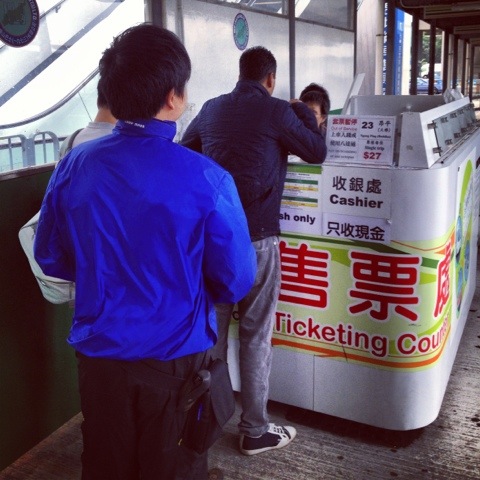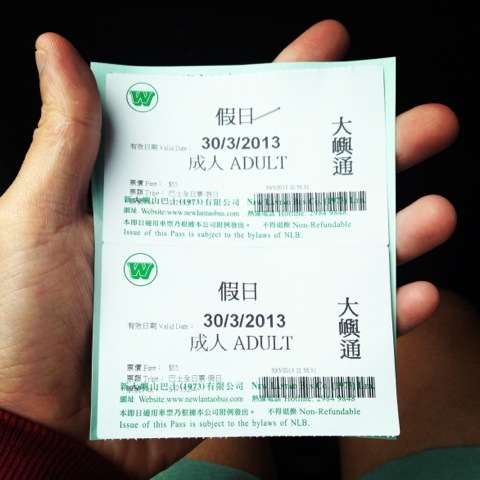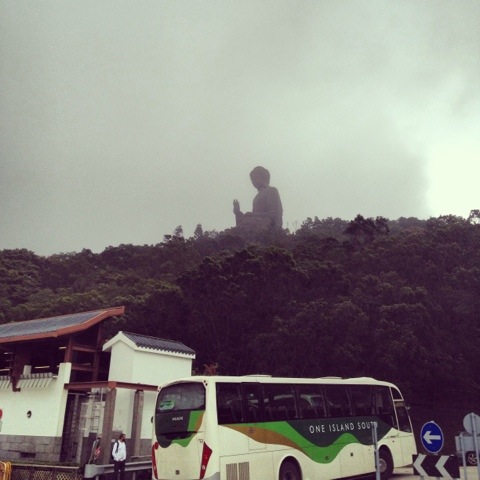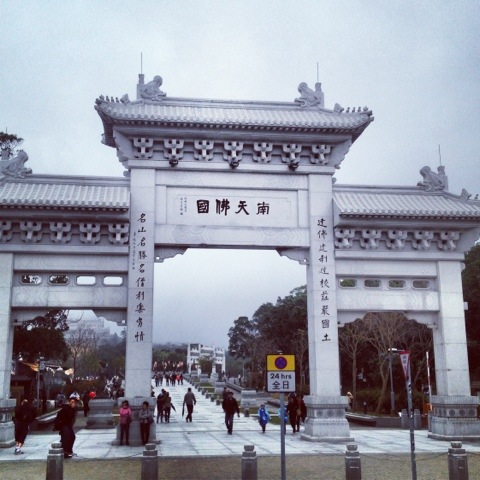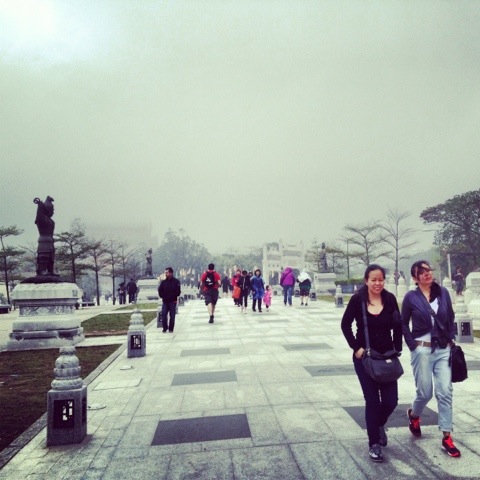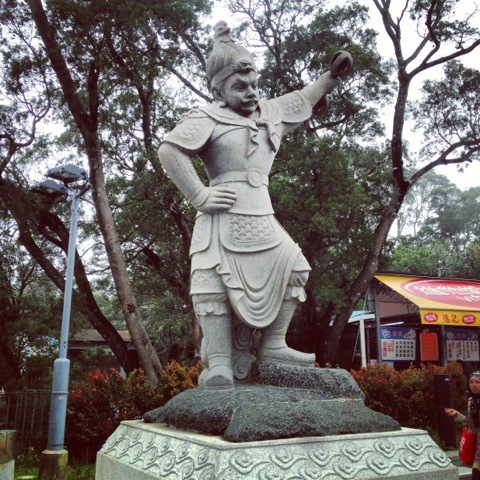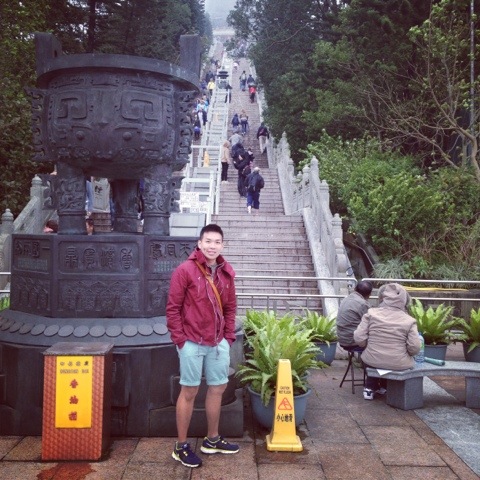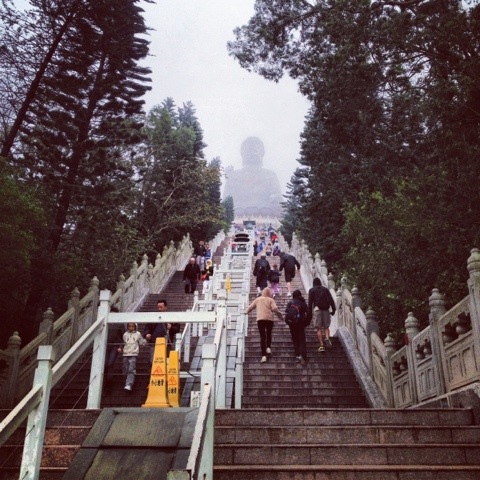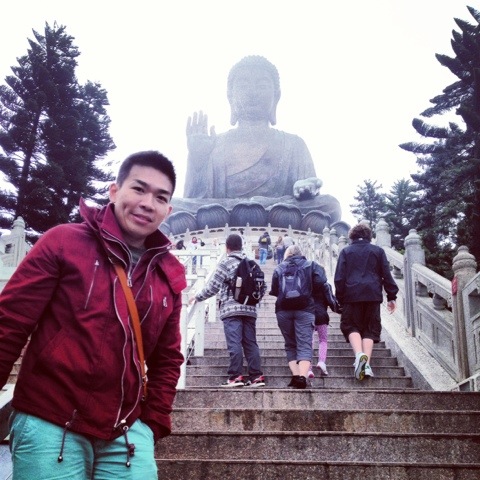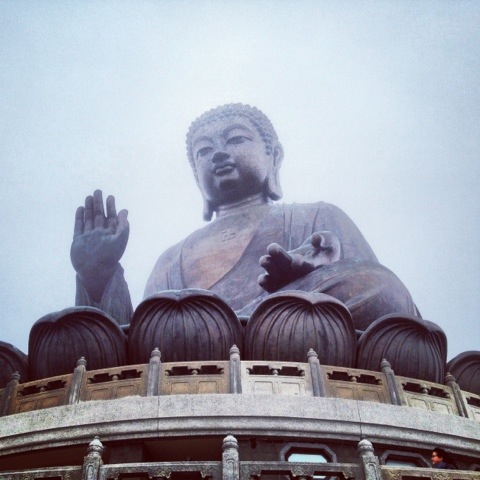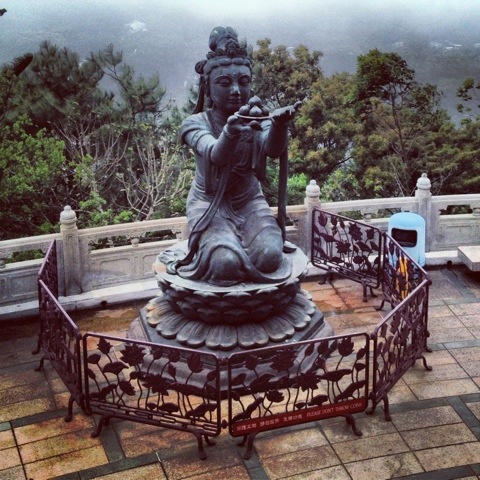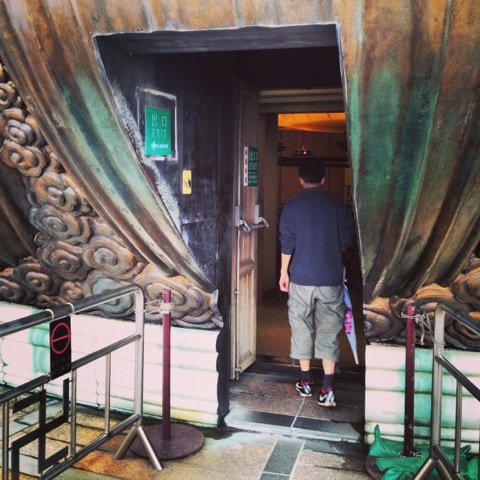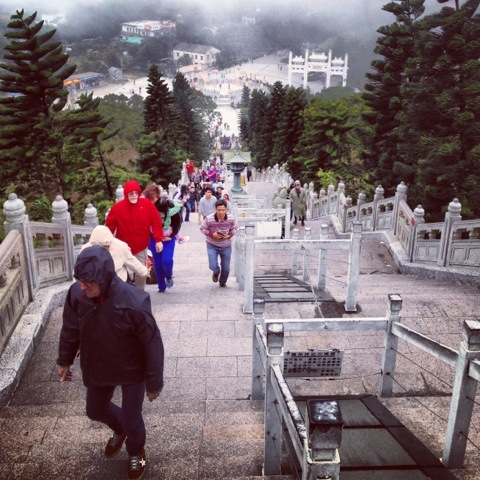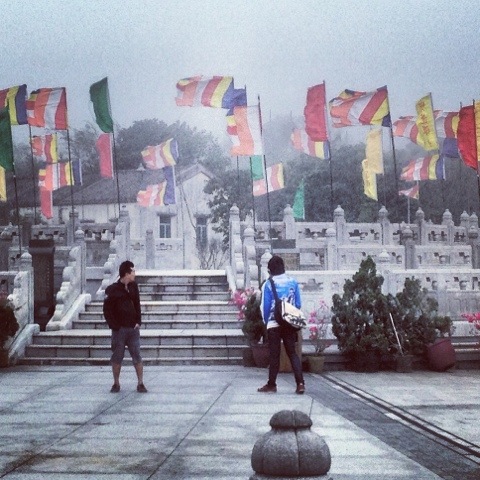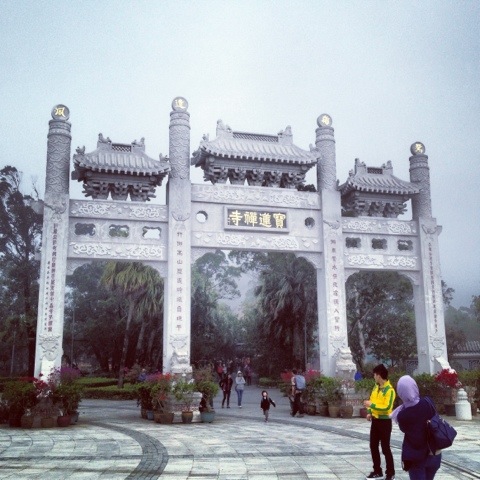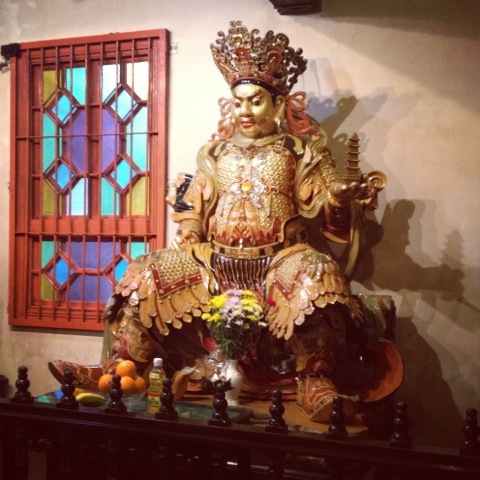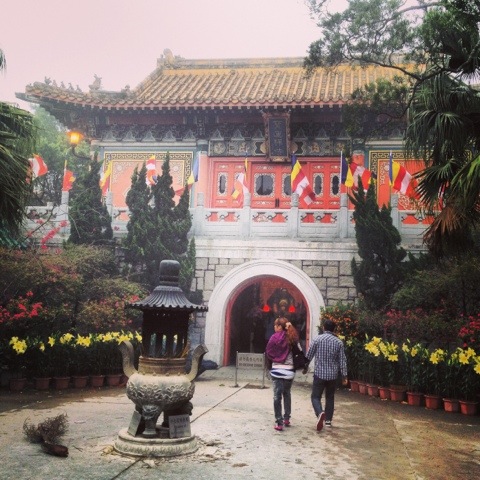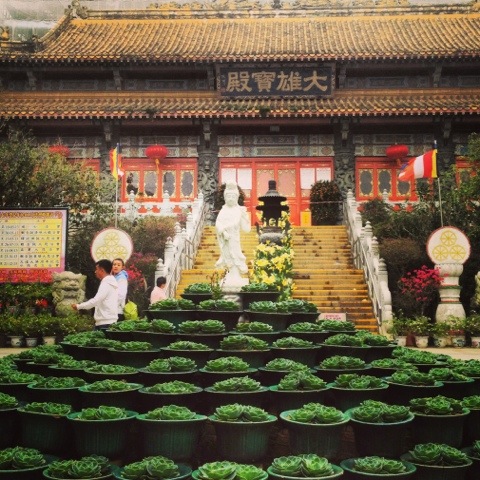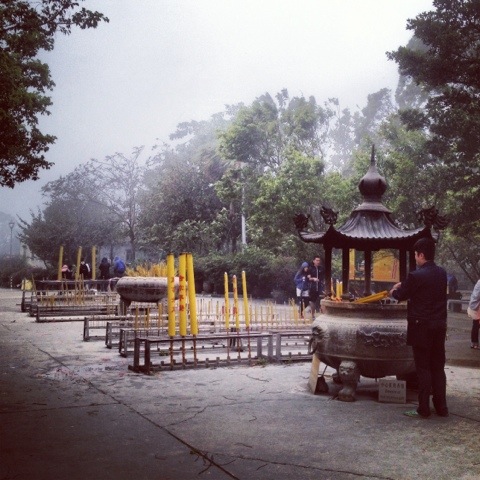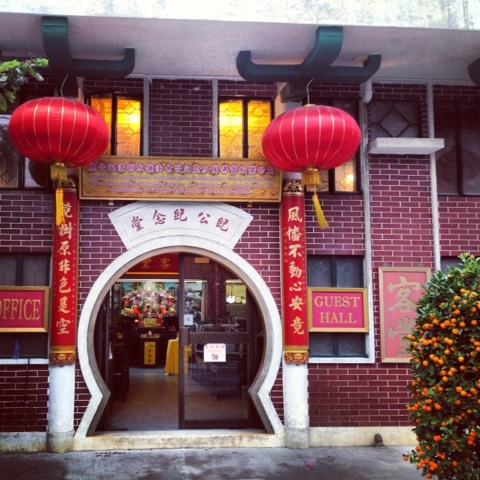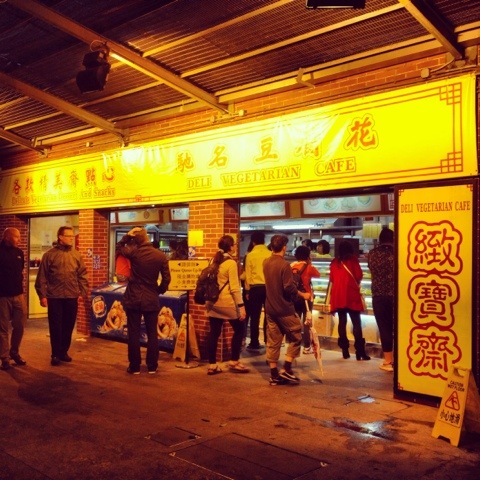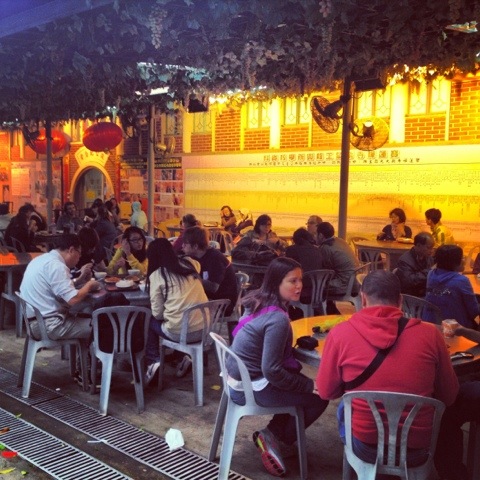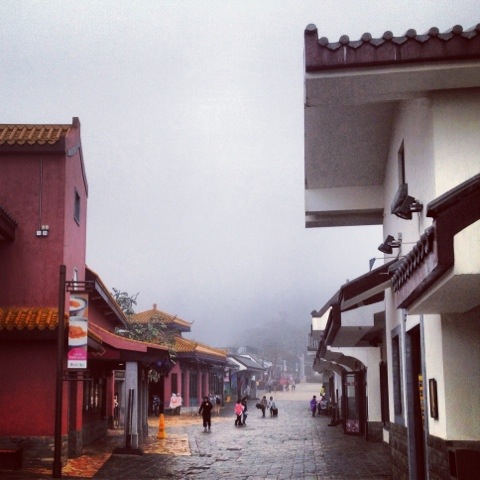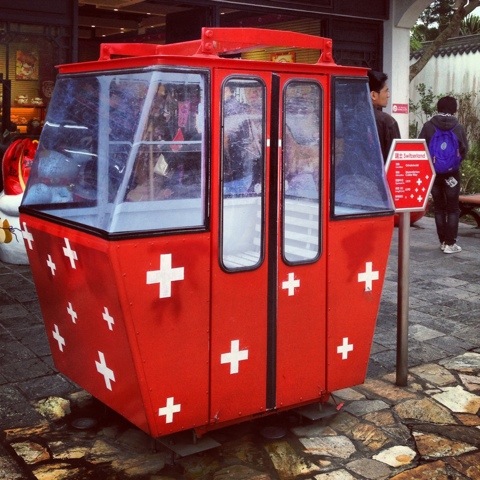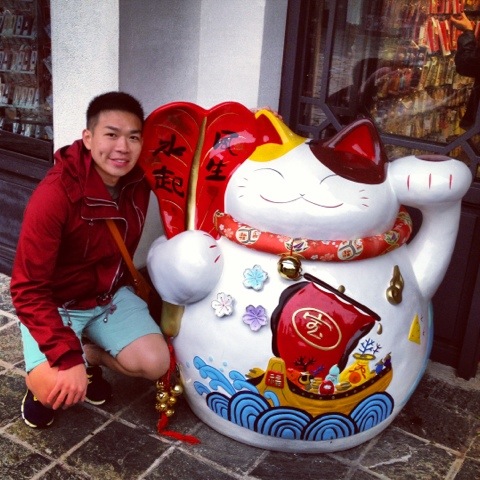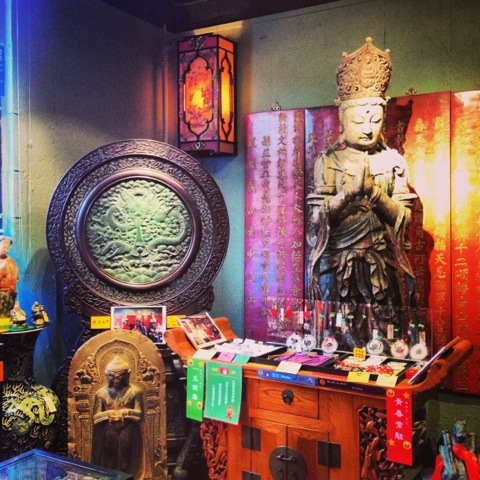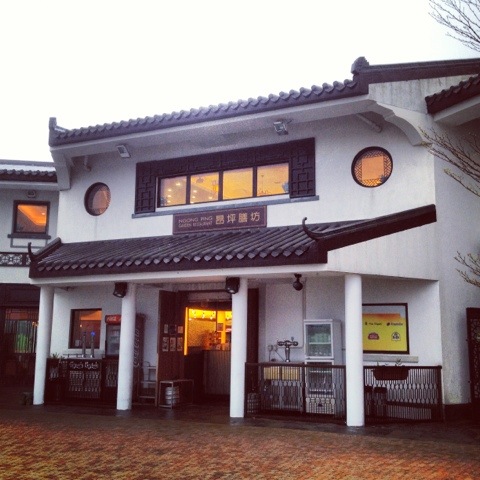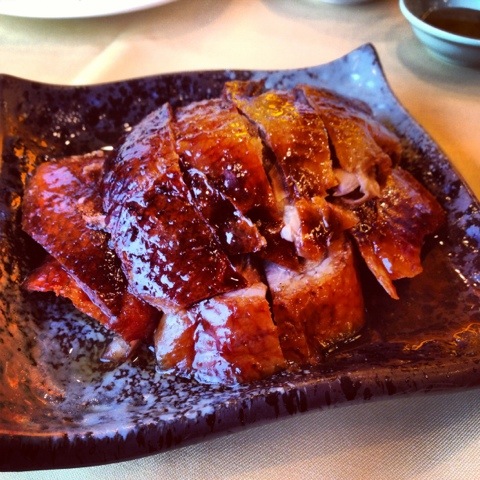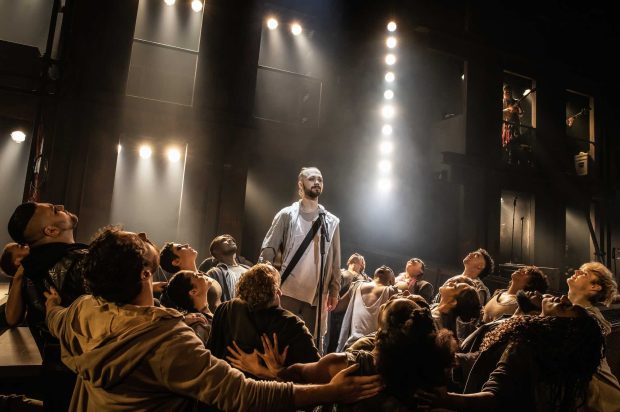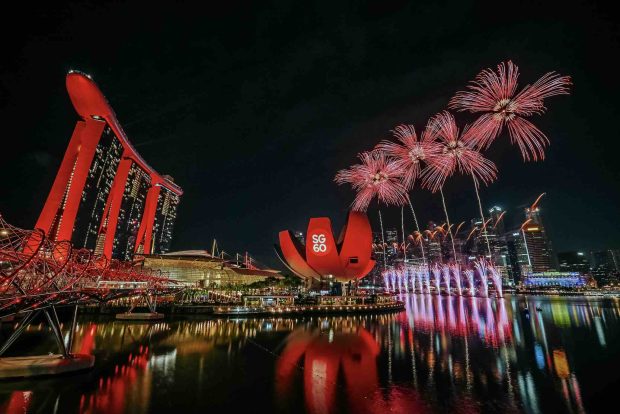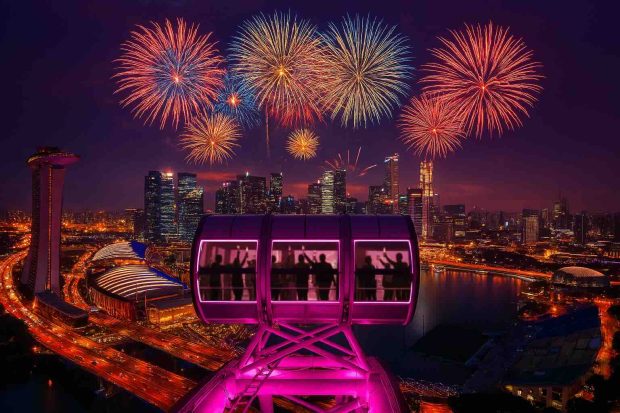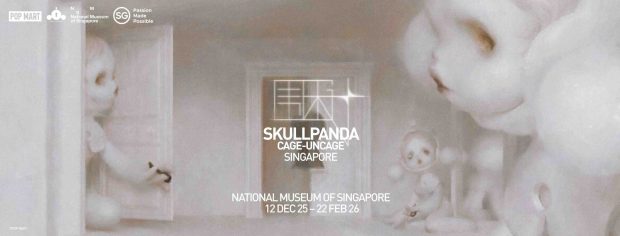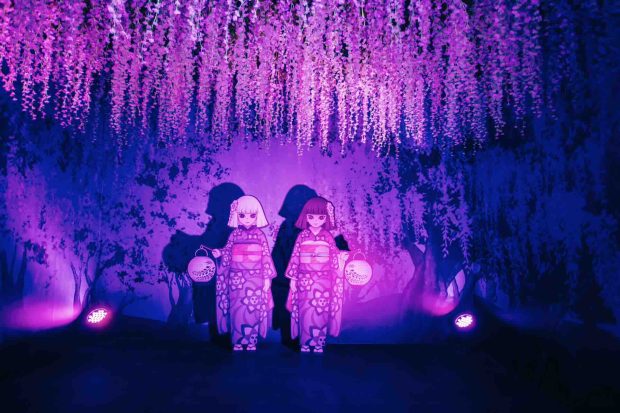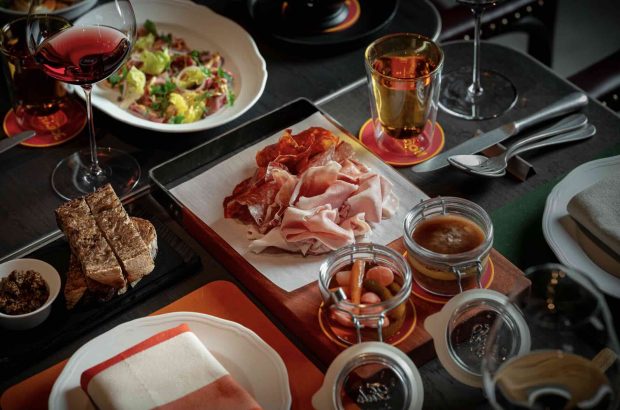You can’t exactly say that you have been to Hong Kong without paying tribute to Tian Tan Buddha (昂坪天壇大佛), visit Po Lin Monastery and shop at Ngong Ping Village on Lantau Island. Unless you are thinking of taking the ferry, MTR Tung Chung Station is the only way of getting onto the island. My plan was actually to get on the Ngong Ping Cable Car for a scenic bird-eye view over the island. Unfortunately, the service was temporarily unavailable due to bad weather conditions. In the end, we had to queue to get onboard the boring New Lantao Bus 23.
Our bus tickets to the Tian Tan Buddha (aka Big Buddha). Note that the fare is HK$17.20 from Monday to Saturday and HK$27 on Sundays and Public Holidays.
After around 45 minutes of travelling, we have finally reached our destination! The weather was so bad that we can only see Big Buddha’s silhouette at the bus drop off point.
Behold, the pearly white gates of Southern Heaven. Feeling holy already.
The strong chilly wind and thick white fog does make me feel as though I am treading through the clouds.
Giant statues of The 12 Divine Generals lined both sides of the path to Big Buddha. Each of these protective deities represents 2 hours of a day. Wow, shift work even in the heaven realm.
A video speaks a thousand words, take a look for yourself how strong the wind was on the day I visited.
It did not take us long to reach the foot of the steep ascent. At this point, I really regret wearing my shorts. I need more protection from the cold cutting wind.
The 268 steps looked really daunting. Seem to be a test on worshippers’ and visitors’ determination to meet Big Buddha up-close.
Yes, we are almost there! Just a few flights more!
Erected in 1993, Tian Tan Buddha sits 34 metres high and face north to look over the Chinese people. The eyes, lips, incline of the head and raised right hand delivering a blessing to all, combine to bring a humbling depth of character and dignity to the massive Buddha, which took 12 years to complete.
At the lotus base, we got to enjoy the sweeping mountain and sea views. There were also six smaller bronze statues surrounding Big Buddha known as “The Offering of the Six Devas“. They are posed offering flowers, incense, lamp, ointment, fruit, and music to the Buddha which symbolises charity, morality, patience, zeal, meditation and wisdom, all of which are necessary to enter into nirvana.
Here’s the video of the view of Big Buddha upclosed:
Through this door, we gained access to 3 floors beneath the Buddha statue: The Hall of Universe, The Hall of Benevolent Merit, and The Hall of Remembrance. A relic of Gautama Buddha rested in this space and only visitors who purchased an offering for Buddha are allowed to see the relic when presenting their offering. We also chanced upon a large bell adorned with Buddhas images. The bell was designed to ring every 7 minutes amounting to 108 times a day which denotes the release of 108 types of human vexations.
Have explored the intricate interior of our Big Buddha, we carefully made our way down for Po Lin Monastery and Ngong Ping Village.
Directly fronting the Big Buddha was a circular raised platform known as Di Tan (Altar of Earth) that’s decorated with numerous colorful flags. It is here where the monastery hold many of its major functions and ceremonies.
The way to Po Lin Monastery was marked by another pearly white gate.
Home to many devoted monks, this monastery is rich with colourful manifestations of Buddhist deities.
The tranquil garden with its bright cheerful flowers guided visitors to the main halls of the monastery.
Da Xiong Bao Dian (Great Hall of Treasure) enshrined 3 Buddhas – Sakyamuni, Dipamkarara and Maitreya.
Worshippers offers joss sticks and incenses of all sizes.
There’s even a guest house to accommodate serious worshippers!
If you are feeling hungry after all that climbing, you can grab a bite at monastery’s vegetarian cafe and
rest your legs before making your way to heading to Ngong Ping Village.
You will be disappointed if you are expecting a rustic rural village. The entire area is more of a touristy mock up village.
A station for the popular Ngong Ping Cable Car, cable cars painted with different national flags are scattered all over the village.
We took our time shopping from the modern Fortunate Cat specialty store to
the more serious religious and antiques shops.
With our stomach growling, we walked into a Hong Kong Cuisine Restaurant within the village for a quick nibble before taking the same Bus 23 back to MTR Tung Chung Station.
Located within the tourist area, I did not harbour high hopes for the food. It was a bonus that my roasted goose turned out really well. I love Hong Kong Roasted Goose, can’t get enough of them. I wonder why no one brought them over to Singapore.
Despite the cold winds and wet weather, I really enjoyed my trip to Lantao Island. If you are thinking of making your way up to Big Buddha, here are the 3 main ways of getting there:
1. MTR Tung Chung Station Exit B, then take Ngong Ping Cable Car, which takes around 25 minutes. Then walk for around 10 minutes to the Monastery.
2. MTR Tung Chung Station Exit B, then take New Lantao Bus 23 from Tung Chung Town Centre, which takes around 45 minutes. Then walk for eight minutes.
3. Catch ferry from Central Pier 6 to Mui Wo, then take New Lantao Bus 2 to Ngong Ping Village, which takes around 40 minutes.
View more post from Hong Kong below:
HongKongHKZ
You may also like to check out my posts on other exciting travel destinations here

